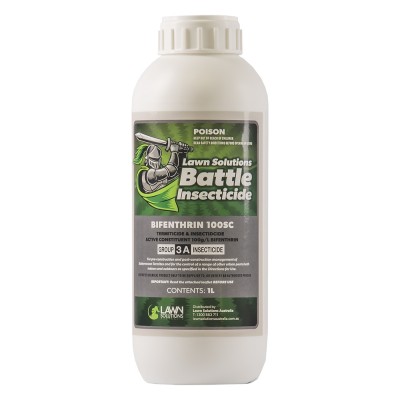If you find your lawn afflicted with the curse of the lawn grubs don’t despair. Treating and eradicating these pests is relatively easy. You will need to be particularly vigilant as the weather warms up, usually September to March, and after heavy rain. Couch and Kikuyu varieties are usually the most prone to attack and Buffalo to a lesser extent. Once you have determined that you are indeed under attack you must defend your lawn without delay.
Symptoms
As a result of extensive root damage caused by these larvae or lawn grubs, your lawn can no longer take up the moisture and nutrient it requires efficiently. This causes the grass to become dry and straw like, as it would during severe drought conditions.
When at its worst, the grass will actually be able to be peeled back easily from the soil surface as the roots have been eaten away. This is when you will inevitably find a large number of feeding larvae.
Common signs of a lawn grub infestation
- Increased bird activity on your lawn
One of the most easily spotted symptoms is an increase in bird activity on your lawn. These grubs make a great snack for the local birds and you’ll find them popping over to your place for lunch!
- Spongey lawn
A spongy lawn can also be a good indicator of grub activity.
- Brown patches in your lawn
Brown patches that gradually spread may also be a sign that grubs are present.
But if you are looking to confirm for certain if they are there then there are a couple of tests you can try.
How to identify a lawn grub problem
- First test is to lay a wet towel, hessian bag or piece of carpet on the lawn overnight. In the morning, lift it up and see if anything has come to the surface and is underneath it.
- Second test is to mix together a bucket of soapy water and pour it over the edge of an affected area. Keep any eye on it and after about 10 minutes or so, usually if there are grubs there, they will come to the surface. This is best done at dawn or dusk when they are most likely to be active.

So, you’ve done the tests and you do have a grub problem, but how do you fix it?
Treatment
Due to the rate at which lawn grubs feed (and move across your lawn), the amount of eggs they lay and the sheer numbers involved in an infestation delaying treatment can be disastrous. Your local turf farmer, online lawn care product provider or nursery can supply advice and a fast acting insecticide such as Battle Insecticide to get the job sorted quickly and easily. Always follow the manufacturer’s handling and safety instructions and use a product that is designed especially for the type of lawn you have. Each different insecticide product type requires a different method of application so it is essential that you read all instructions to receive the outcome you need; no more lawn grubs. Because lawn grubs bury themselves in the soil during the day and come out to feed at night the most effective time to apply the treatment is as late in the day as possible while the adults are active.
If you are treating during a dry spell remember to water the insecticide into the lawn. If you are lucky enough to have rain coming then use the opportunity to your advantage; apply the treatment while the rain is falling. To ensure the grubs are eradicated, apply the treatment again in two weeks. This is especially important because eggs can take two to five weeks to hatch. A re-application at this point will ensure that any missed eggs or grubs are eliminated.
Prevention
Unfortunately attack by these grubs can happen to any lawn and can occur numerous times during a season.
This is why we recommend Grub Guard Ultimate, Acelepryn GR and Acelepryn Liquid. Acelepryn provides safe and effective control of black beetle while minimising the impact on the environment and non-target organisms, such as bees and earthworms.
Acelepryn targets pests such as black beetle, stem weevil, cut worm and army worm. The great thing about Acelepryn in comparison to other pesticides, is that it’s preventative. This is why spring is a great time to spread it out and protect your lawn for up to six months.
Black Beetle Larvae
Black beetle eggs are laid in spring and early summer. After several weeks the eggs hatch and the larvae or grubs emerge that then feed on the grass roots. It is when large numbers of these eggs hatch that it is a serious problem for some lawns. These larvae develop through 3 stages, the fully-grown larvae at the end of the third stage are around 25mm long. You will need to be particularly vigilant as the weather warms up, usually September to March, and after heavy rain.
The larvae then move into pre-pupae and pupae stages which cause no damage to your lawn, before developing into adults after about 2 months, in late Summer or early Autumn.



